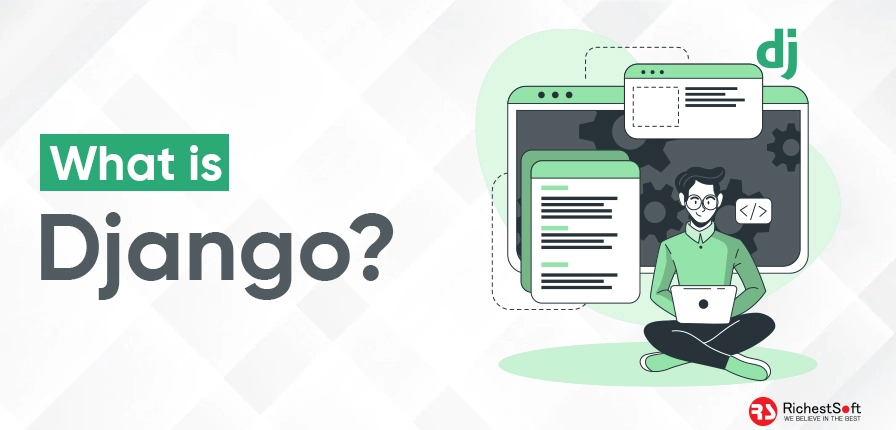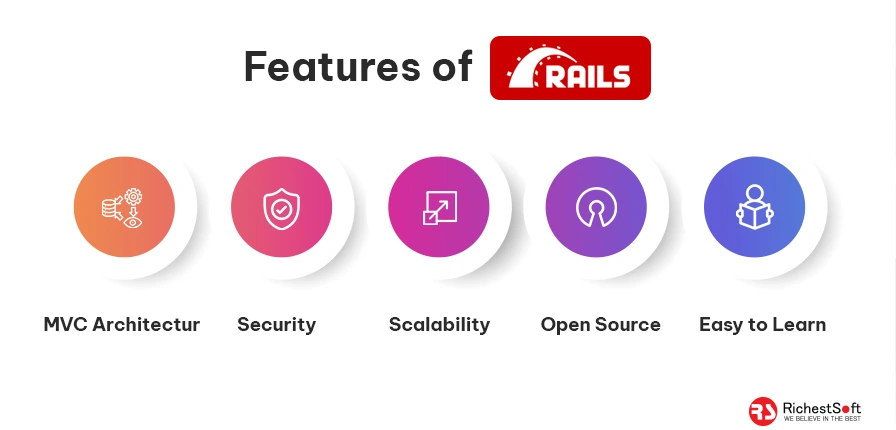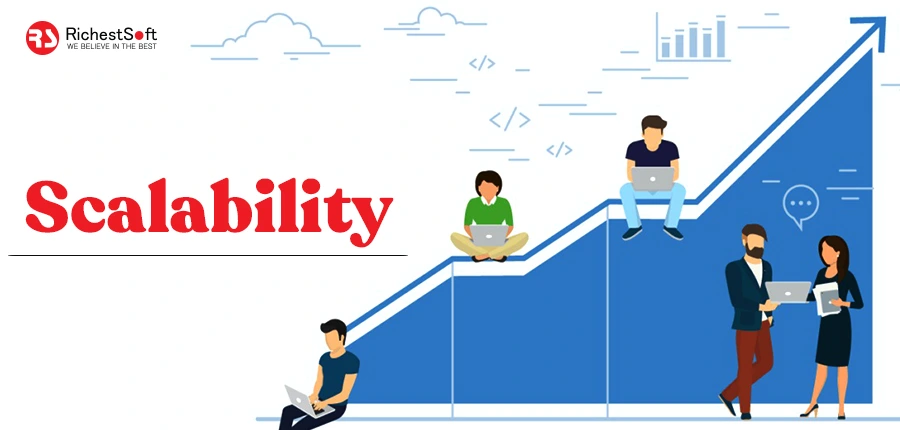As web frameworks become more popular, developers must decide which framework is the best for their projects. Ruby on Rails and Django are two of the most popular web frameworks, and each has its own advantages and disadvantages. In this article, we’ll take a look at both Ruby on Rails and Django and compare them in order to determine which framework is best for projects in 2023.
Are you stuck trying to decide between Django and Ruby on Rails as your framework for 2023? It can be a tough choice, as both frameworks have their own sets of pros and cons. To help you make an informed decision, we’ve put together this guide that answers 10 of the most commonly asked questions about these two frameworks.
What is Django?

Django is an open-source, full-stack web framework written in Python. It’s designed to help developers quickly and easily create web applications and content management systems. Django is known for its scalability, security, and robustness and is suitable for both small and large applications.
Django is a popular web framework because it allows developers to easily create complex web applications in a fraction of the time that it would take to create them from scratch. It also provides a great deal of flexibility and scalability, which makes it suitable for a wide range of applications.
Django is also very secure and comes with a range of security features, such as authentication and authorization, that help protect applications from malicious attacks.
What is Ruby on Rails?

Ruby on Rails (or Rails, for short) is an open-source, full-stack web framework written in the Ruby programming language. Rails is designed to help developers quickly and easily create web applications, and is well-known for its powerful database migrations, easy-to-understand syntax, and focus on convention over configuration.
Rails are designed to be flexible and extensible, allowing developers to create custom applications quickly and efficiently. It is built around the Model-View-Controller (MVC) architecture, which separates the application’s data, business logic, and user interface into distinct components.
This helps developers to work quickly and make changes to the application without impacting the entire application.
What are the main differences between Django and Rails?

The main differences between Django and Rails are the programming languages used, the database support, the scalability, and the performance. Django is written in Python and is more scalable than Rails, which is written in Ruby.
Rails are more suited for rapid development, while Django is better for larger, more complex projects. Django also has better database support than Rails, allowing for more efficient data manipulation. Here are some major differences:
1. The first point of comparison is language: Django is written in Python while Ruby on Rails is written in Ruby. This means that developers with experience in Python will find it easier to work with Django, while developers with experience in Ruby will find it easier to work with Ruby on Rails.
2. The second point of comparison is the database: Django is compatible with a variety of databases, including PostgreSQL, MySQL, and Oracle. On the other hand, Ruby on Rails is compatible with only one database: SQLite.
3. The third point of comparison is the architecture: Django follows the Model-View-Template (MVT) architecture, while Ruby on Rails follows the Model-View-Controller (MVC) architecture. This means that developers with experience in MVC will find it easier to work with Ruby on Rails, while developers with experience in MVT will find it easier to work with Django.
4. The fourth point of comparison is scalability: Django is highly scalable, meaning that it can easily handle large amounts of traffic and data. On the other hand, Ruby on Rails is not as scalable as Django, meaning that it is not the best choice for large, high-traffic websites.
5. The fifth point of comparison is security: Django is well-known for its security features, such as user authentication and password hashing. On the other hand, Ruby on Rails does not have as many security features as Django.
5 Most Looked Features of Django

Here are five of the most important features of Django that can help you create amazing websites.
Scalability: Django is highly scalable, which means it can handle high volumes of traffic and can easily be scaled up or down as needed. This makes it a great choice for businesses that need to handle a large amount of traffic.
Security: Django provides a high level of security for web applications. It has built-in protection against common web attacks such as cross-site scripting, SQL injection, and clickjacking. It also has an authentication system that makes it easy to secure user accounts.
Versatility: Django is highly versatile and can be used to create a wide variety of web applications. It is often used to create content management systems, eCommerce sites, social media applications, and more.
Speed: Django is designed to be fast and efficient. It can quickly process requests and deliver results to users quickly. This makes it ideal for applications that require fast response times.
Extensibility: Django is highly extensible and can be extended with a variety of third-party libraries and packages. This allows developers to customize their applications to fit their needs.
5 Most Looked Features of Ruby on Rails

Here are five of the most important features of Ruby on Rails.
1. MVC Architecture: Ruby on Rails follows the popular Model-View-Controller (MVC) architecture. This makes it easier for developers to create web applications with less code and with more efficiency.
The model handles the data, the view is responsible for displaying the data to the user, and the controller is responsible for controlling the flow of the application. This makes the development process faster and easier.
2. Scalability: Ruby on Rails is highly scalable, which means that it can handle a large number of requests from users. It also has built-in features that allow developers to add new features to the application without having to rewrite the entire codebase. This makes it easier for developers to implement new features without having to start from scratch.
3. Security: Ruby on Rails is known for its security measures. It comes with built-in tools that help developers prevent malicious attacks and protect their applications from hackers. It also has a number of security patches and updates that help keep the application secure.
4. Open Source: Ruby on Rails is open source, which means that it can be used for free by anyone. This makes it an ideal choice for developers who want to develop applications without having to worry about licensing fees.
5. Easy to Learn: Ruby on Rails is relatively easy to learn compared to other web development frameworks. It comes with a lot of tutorials and resources that make it easy for developers to quickly learn the basics. This makes it ideal for beginners who want to learn to develop web applications quickly and easily.
Comparing Ruby on Rails and Django

When it comes to choosing the perfect web development framework, there are many options to choose from. Two of the most popular frameworks are Ruby on Rails and Django. Both frameworks are open-source, well-supported, and have a large community of users.
When choosing the right framework for your project, it is important to consider the programming language, performance, development process, and community support for each framework. But which one is the best for your project? Let’s understand with the table below:
| Parameters | Django | Ruby on Rails |
|---|---|---|
| Language | This is a python-based web framework | This is based on the Ruby programming language |
| Architecture | Model-View-Template or MVT design | Model-View-Controller or MVC architecture |
| Popularity | Django is prominent because it is based on Python | Ruby on Rails is comparatively less famous than Django |
| Speed and performance | It is 0.7% slower than Ruby on Rails | Ruby on Rails is faster |
| Learning curve | It is a bit difficult, to begin with, Django because of its steep learning curve | It has a smooth learning curve |
| Adaptability and Flexibility | It provides very little adaptability and flexibility compared to Rails | It offers more adaptability and flexibility to developers |
| Scalability | It is less scalable as compared to Rails | It provides more scalability |
| Usage | It is useful for ML (machine learning), data science, and AI projects | It is helpful for web projects and metaprogramming |
| Community Support | it is much more popular and has a broad community | Ruby on rails has a small community of devoted developers |
| Examples | A few of the popular sites built using Django like, Youtube and Dropbox | A few of the popular sites built using Rails like, Netflix and Shopify |
Let’s compare and contrast the two frameworks in terms of speed, scalability, flexibility, and cost, in order to determine which is the better choice for web development in 2023.
Speed:
When it comes to speed, both Django and Ruby on Rails are fast and efficient. Ruby on Rails has an advantage when it comes to speed, as it is optimized for quick development.
Django is also fast, but the development process can be slightly slower than with Ruby on Rails. That said, both frameworks allow developers to quickly build applications with minimal effort.
When it comes to rendering pages, Django is generally faster than Ruby on Rails. This is because Django uses a template engine that is optimized for speed, while Ruby on Rails uses an interpreted language. The speed advantage of Django is particularly noticeable when dealing with large datasets.
Scalability:

When it comes to scalability, both Django and Ruby on Rails are highly scalable. Both frameworks are designed to scale with the needs of the project and can handle large datasets with ease. However, Django has an edge when it comes to scalability, as it is designed to be more modular than Ruby on Rails.
This makes it easier to scale applications, as well as add new features and functionality.
Flexibility:
When it comes to flexibility, both Django and Ruby on Rails are highly flexible. Django is more flexible than Ruby on Rails, as it allows developers to write their own code and customize the framework to their needs. Ruby on Rails is also highly flexible, but it is designed to be more opinionated and thus less customizable than Django.
Cost:
When it comes to cost, both Django and Ruby on Rails are relatively inexpensive. Django is open source and free to use, while Ruby on Rails is available for purchase.
For individuals and small businesses, Django is the more cost-effective option, as it is free and relatively easy to use. For larger businesses, Ruby on Rails may be the more cost-effective option, as it offers more features and functionality.
Which Framework is Best for 2023?

When it comes to choosing a web framework for projects in 2023, both Ruby on Rails and Django have their advantages and disadvantages. RoR is faster for small projects and easier to learn, while Django is better for large projects and more flexible.
Ultimately, the best framework for 2023 depends on the project and the developer. For beginners, RoR may be a better choice, while for experienced developers, Django may be a better option.
FAQs:
To help you make an informed decision, here are some frequently asked questions about Django vs Ruby on Rails:
Q1: What are the key differences between Django and Ruby on Rails?
A: The key differences between Django and Ruby on Rails are the programming language they are written in (Python vs Ruby), the scalability of the framework, and the features they provide.
Q2: Which one is better for web application development?
A: Both Django and Ruby on Rails are powerful and feature-rich web development frameworks. The best one for your project depends on what features you need and which programming language you are most comfortable with.
Q3: What are some of the advantages of using Django?
A: Some of the advantages of using Django include its robustness and scalability, its powerful template engine, its user authentication system, and its easy-to-use admin interface.
Q4: What are some of the advantages of using Ruby on Rails?
A: Some of the advantages of using Ruby on Rails include its scalability, powerful database layer, its user authentication system, and its caching capabilities.
Q5: What type of applications are best suited for Rails?
Rails is well-suited for rapid development, such as websites and web applications. It’s also well-suited for applications that require a lot of database manipulation, such as e-commerce sites and content management systems.
Q6: What are the pros and cons of Django?
The pros of Django are its scalability, robustness, and security. It also has better database support than Rails, allowing for more efficient data manipulation. The cons of Django are that it can be more difficult to learn if you’re not familiar with Python and that it can be slower than Rails.
Q7: What are the pros and cons of Rails?
The pros of Rails are its rapid development capabilities, easy-to-understand syntax, and focus on convention over configuration. It also has better support for databases than Django. The cons of Rails are that it can be slower than Django and that it can be more difficult to learn if you’re not familiar with Ruby.
Q8: Is Django better than Rails?
It really depends on your individual needs. Django is better suited for larger, more complex applications, while Rails is better suited for rapid development.
Q9: Is Rails better than Django?
Again, it depends on your individual needs. Rails is better suited for rapid development, while Django is better suited for larger, more complex applications.
Q: Which framework is easier to learn?
It really depends on the individual. Django is considered easier to learn if you’re familiar with Python, while Rails is considered easier to learn if you’re familiar with Ruby.
Conclusion:
In conclusion, both Django and Ruby on Rails are excellent web development frameworks. When it comes to speed, Django is generally faster than Ruby on Rails, although Ruby on Rails is optimized for quick development.
Both frameworks are highly scalable and flexible, and both are relatively inexpensive. Ultimately, the choice of the framework will depend on the needs of the project, as well as the budget and timeline.
 +1 315 210 4488
+1 315 210 4488 +91 798 618 8377
+91 798 618 8377


